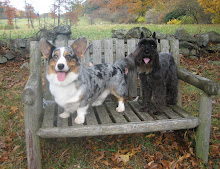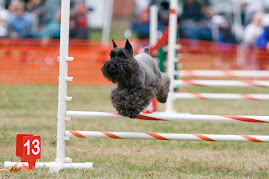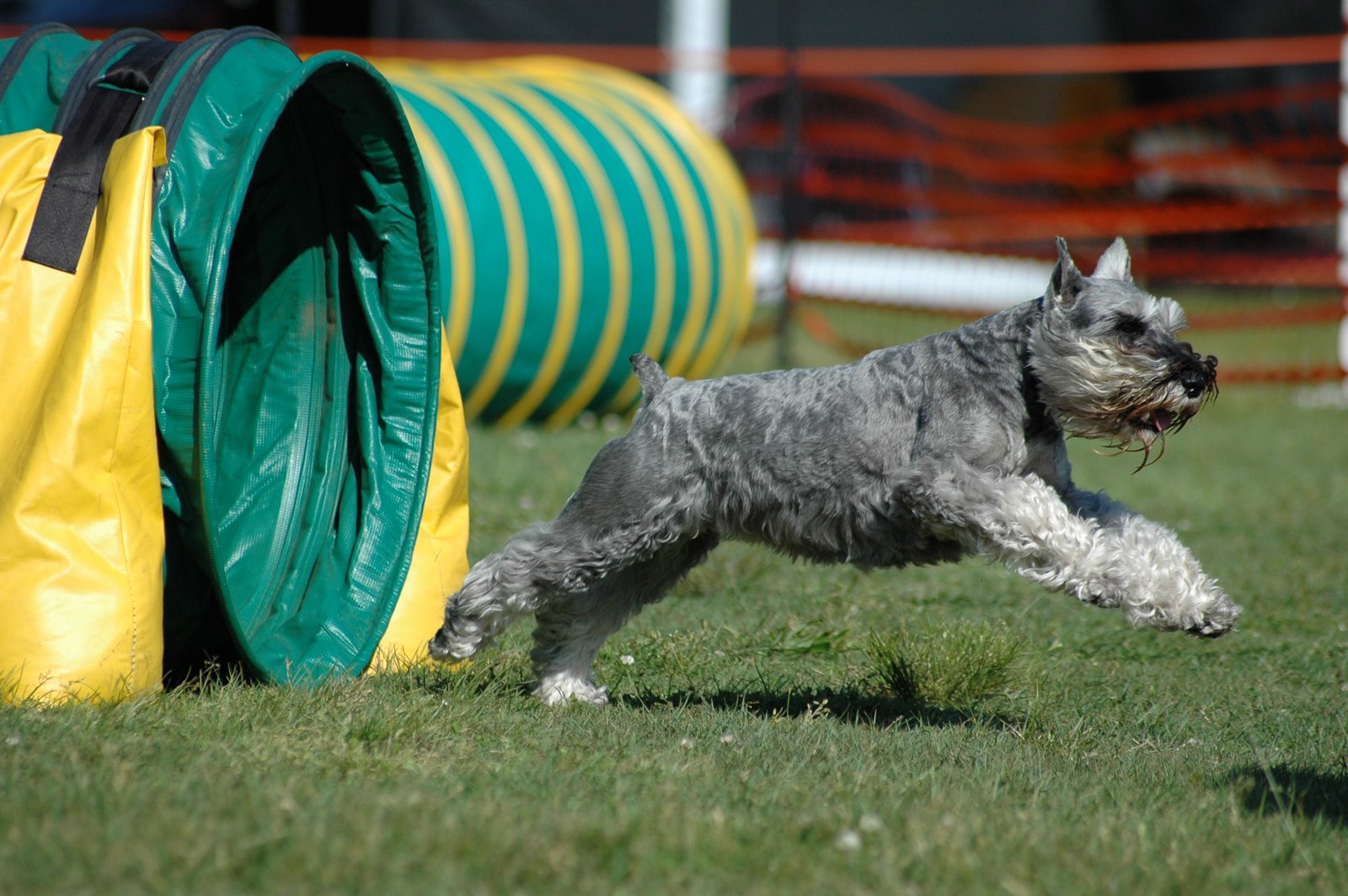Yesterday I attended a seminar put on by the Wachusett Kennel Club. The seminar was on Puppy Development and the presenter was John Rogerson. John Rogerson is a behaviorist from England who has been working with dogs for the past 3o years. It was an excellent seminar - I wish I could have afforded to go to the Aggression seminar he is giving at this very moment.
Below are my notes.
==============
While we were waiting the last five minutes for all attendees to show up John Rogerson (J.R.) talked about the differences in dog training in other countries. He works with our government, the Cuban government, International Association of Guide Dogs, the Kennel Club in England, teaching at University in India and Italy, etc. He said the UK and US are the only places where you see a group of trainers that are predominantly female.
Apparently the UK Kennel Club has a program to certify trainers called the Kennel Club Accredited Instructor Scheme (aka Program). It is accepted by vets worldwide and takes about 5 years to complete. It includes Learning theory, breed specifics, anatomy/physiology, grooming, law, handling, and ability to teach.
J.R. said he likes to start the series (as this is typically a 4 day seminar and has been condensed into one day for the Wachusett Kennel Club) by talking about the frightening situation we are currently in – that it then DRIVES the seminar.
Dog bite deaths have doubled in the past 6 years in the USA (17 v. 30).
He said in the past the typical British family dog was a small-to-medium dog with wirey fur and on average lived about 15-16 years. It went every where with its people and was very well socialized. He said that the typical British Family dog no longer exists. He said he feels that is part of the problem.
People – “pet owners” NOT “Dog Enthusiasts” – are owning dogs bred for a specific purpose and expecting them to be a companion. He strongly feels this plays a part in aggression, as does ordering dogs off the Internet, and the number of “pet owners” who own a 2nd dog to keep the first dog company.
In his opinion for the “pet owner” all owning a second dog does is dilute the owner’s influence by 50% and increases dog-dog aggression. He claims that in an area where a doggie daycare has recently opened dog-dog aggression increases.
Back to puppies....
Breed Standard – Genetics versus “pet owner” expectation. Genetics gives the possibility. Owners need to control it.
Genetic behavior is pre-programmed at birth. It is inflexible to any kind of modification. For instance do you not expect a Doberman to want to guard it property? Genetics can be CONTROLLED with training but not manipulated.
Puppy = Genetics + life experiences at home with breeder + new owner.
Be aware of impact of other dogs in a breeder’s home on puppies. Puppies use dogs other than the mum as role models.
From 3 weeks on all sense are working and play develops.
Play:
1st true interactive behavior – pawing
2nd mouthing, lock mouths
3rd Wrestling
4th Chasing
Play is important because it allows pups to compare against each other, bond with other pups, relax, and allows them to practice life skills (terriers – mouth, BC - chase, Rottis – wrestle)
Play Biting.
J.R. feels that all the things we do to extinguish biting activities tells our dogs that biting and playing with us is not okay.
He feels the best way to stop play biting is to bring your pup into a room, tether him to a door or the wall and interact with the dog and the toy. If the pup’s teeth touch your skin – you move outside the reach of the tether. Once the pup picks up the toy again be it out of frustration or whatever – re-engage play. Dog more easily learns that play doesn’t happen when teeth touch skin.
Good breeders have the opportunity to instill appropriate play skills in pups. Give puppies more toys than pups and of a very large size so that the pups can interact with the toy and each other without their teeth touching other pups. Rotate toys to keep them novel. He said he sees a 90% decrease in pups being mouthy with humans using this technique and cuts down on possessiveness (as there are always enough toys). The bonus is you have a very toy driven dog. Versus a dog that has had the play drive extinguished and the owner now must rely on food as a reward.
The big question is what happens to a puppy between purchase and being dropped off at a shelter. It is a combination of genetics, what happened at the breeders, and you.
To prevent separation anxiety from 3 weeks on mum needs to be able to remove herself from the puppy area at will and get back in whenever she wants. You do not want to lock mum in a different room because that can cause to increase sep. anxiety. Pups bark for mum. She responds but is unable to get to them. Pups hear her response and hear that “Yes, There is a reason to be worried.”
Where puppy is kept at the breeders is their model of the world. 2/3 of the surface should be something that is common in households and will most likely be found in your house (rug, hardwood, linoleum). 1/3 should be a novel surface. Mum will house train the pups by teaching them to seek out someplace other than where they eat and play to go to the bathroom.
Creating a reactive dog.
Mum is GREAT with the breeder, but when a new individual arrives – woo woo woo.
New individual makes off with one of your littermates!
New individual arrives, mum – woo, woo, woo.
New individual makes off with another littermate!
This is imprinting and imprinting is FOR LIFE. The first pup may be able to recover with proper socialization, maybe. Pups 2, 3, etc – CANNOT recover from this. Will most likely always think people are creepy. All you can do is control the reactivity. Mum has very effectively taught these pups, “Trust with your life the people you live with – no one else.”
Possession Issues.
Feels breeders can begin to prevent this by having more food bowls, water bowls, and toys – teaches dog there are enough resources.
To test at home with your pup walk up while they are eating. If they start to eat faster they are a bit possessive about their food. What to do? Break food into two bowls six feet apart. While dog is eating a bowl A, walk up to Bowl B and sprinkle chicken on it. When puppy moves over to Bowl B to check out the yummy chicken walk up to Bowl A and sprinkle chicken on that bowl. Puppy quickly starts to understand that not only is there plenty, but if you let the human near it you might get something better.
J.R. firmly believes that in the cases of food aggression, reactivity, etc. if the puppy is 12 weeks or under you should return them to the breeder.
J.R. believes that the socialization period is even shorter than the commonly accepted length of the 3 weeks to 12 weeks. He feels it is 3 weeks to 9 weeks. He feels that getting a pup at 12 weeks is buying a book that is already written.
If he said it once, he said it 10 times – the key to the future success of dogs in our community is supporting GOOD breeders – they have the opportunity to change things.
J.R. feels that puppy class lesson plans and training techniques should be geared more towards the make-up of the specific breeds in the class. For example, he feels a guarding breed (which has a natural propensity for possessiveness) should never be taught to tug UNTIL they have a very solid retrieve (which is a game of sharing). J.R. feels one of the biggest problems with puppy classes is that they are geared to Dog Enthusiasts and not the general public and it is the general public who needs them. He questions why we still include so many competitive obedience pieces when it is really general skills the owners want.
If you are teaching a socialization class and we are saying socialization occurs from 3 weeks to 9 weeks you have 1 week from when the pup arrives home. J.R. suggests intensive 1 week class. First night at his house – he controls all the food, water, and toys. 2nd night at a classmates house, Classmate controls all the food, water, and toys, etc. Teaches pup that we are all the same – we are a community. Feels it is more important for pup to play with appropriate adult dogs than with other puppies.
J. R. cautions that names are very important and can be self-fulfilling for owners and dogs. Feels they are a window into the owner’s psyche. If they have named their Yorkie Saddam or the JRT Snap and they are a pet owner – what do you expect?
One of his favorite things to do for puppy class is ask the owners to go online and prepare a 5 minute spiel on their breed for the first night – which is without puppy and goes over training methodology, local dog law, responsibilities, and asks WHAT IS YOUR VISION FOR YOUR PUPPY?
Many people do not actually know what their dog was bred for or why it is important and might impact their training.
Pulling.
This is how J.R. teaches a dog not to pull. He uses something called Premature Conceptual Learning which he learned from elephant trainer is the Philippines.
At 5 – 6.5 weeks old the breeder should take each puppy into a different room, alone. Put a collar on them and tether them to the door or the wall. Sit next to the pup and wait. He said one of four things will happen.
1st scenario – pups pulls and then gives up and relaxes the lead
2nd scenario – dog is scared and you reassure him and he relaxes the lead
3rd scenario - Temper tantrum and then relaxes the lead.
4th scenario – puppy is in distress and might submissively urinate.
Scenario 4 is the only instance in which you should take a step back and build up to the situation. He said that 3 – 4 10 minute sessions very effectively teaches a dog that pulling gets him no where.
For dogs that pull on lead and are older than 5 – 6 weeks. Buy a new lead. Pretend you are holding a full glass of water in your hand with the leash. The second that water cup would be dumped – you pretend to take a nasty fall. Act hurt. Slowly get up. Walk in a pained manner for about 50 yards. Do this about three times. Assuming you have a relationship with your dog they will begin to worry that they are causing you to be hurt and will adjust their pulling behavior to prevent hurting you.
All training is DESIRE. Desire to gain something that benefits them. Desire to avoid something bad.
How much desire does the owner have to train?
Recall.
J.R. says NEVER teach a recall in the backyard.
J.R. suggests driving someplace about an hour-and-a-half away where you can allow the dog off leash in an open space. Let the dog off leash. You stand in the same spot. Allow dog 20 minutes to explore area. Then walk to the car door, open the door, call your dog, and wait 30 seconds. If he is not en route, you get in the car and drive down the road.
Why?
The dog is someplace he has never been before. He does not know how to get home. He should be cognizant and have a good enough relationship with you that he recognizes you are his only chance of surviving. If he does not then you need to work on your relationship with your dog prior to trying to teach a recall.
He suggests driving only a half hour away for puppies.
Teaching Down Stay.
First introduction to the down stay should happen after you have run your dog ragged, fed him, and then asked him to down. The first time a dog does a new behavior effects how they will do it forever more. We want to teach our dogs that a down stay is relaxing and self-rewarding.
Magnitude of Reinforcement.
Ask you puppy people to list:
5 foods in order of absolute favorite to okay
5 toys in order of absolute favorite to okay
5 ways to touch the puppy or dogs in order of absolute favorite to okay
If your puppy people cannot do this they should work on their relationship with their dog. When training, start with lowest reward in the beginning. Save the higher reward to strengthen the training.
Playing.
Toy should fire off some natural instincts in the dog.
Teaching Retrieve.
Start with lower value toy. If you throw most valuable toy why on earth would they want to bring it back to you. Puppies and dogs have a natural desire when they have something new and novel to take it off in a den to examine it.
Put a coffee table in the corner of the room creating a den. Toss the toy toward the table – about halfway. The pup will run after toy and then continue to the coffee table. Walk over to the coffee table – crouch down and face away from the coffee table (so your back is facing the puppy). Quietly stroke the dog. Once the dog relaxes take the toy back to the same spot and do the same thing. Do this about six times.
Now move so you are sitting on the coffee table. Toss the toy away from you. When he heads toward the coffee table – there you are. Introduce trade. Trade the EXACT same toy for toy he has “retrieved.” After dog is doing the efficiently move from coffee table – you will find dog begins to come to you. Then remove coffee table.
With tugging J.R. recommends pulling in toward your stomach and letting the dog pull out. He doesn’t recommend head shakes as he feels they can escalate out of control too quickly as they mimic a killing shake.
Motion Sickness.
Breeders can help minimize puppies that have motion sickness by putting them in a crate in the center of the care with cardboard on the sides so that they can only see forward and backward. Do not feed them prior to the first few trips.
Another suggestion is something called a grounding strip. Something to do with the static electricity can cause motion sickness.
For incorrigible counter surfers who have humans who are not willing to do management he recommended double-sided sticky tape.
2 months ago






4 comments:
Sounds like a great seminar. You sure have alot of seminars in your area. Boy are you luckey. Diana
I wanted to go to that so bad! :( Lucky.
I firmly believe that the fact that Strata was seperated from mom (but not from his littermates) at 6.5 weeks has a lot to do with his total lack of seperation anxiety. He barks for about 10 seconds when I leave, and then takes a nap and is totally chill.
A lot of that stuff is so common sense, but it's good to have a reminder! Thanks for the notes.
Awesome Julie - thank you so much for sharing! I am definitely going to try some things when I have another litter.
awesome posts and information
best cbd oil for anxiety
Post a Comment